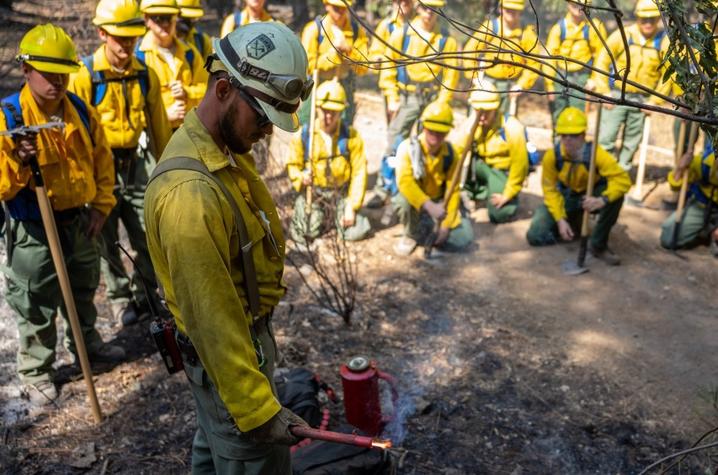CELT partners with US Department of Interior for wildland fire teacher training

LEXINGTON, Ky. (Aug. 26, 2022) — As famed Irish poet William Yeats once opined, “Education is not the filling of a pail but the lighting of a fire.” Written in the 1800s, nothing could be more true in the present day. Teaching is that exceptional calling that ignites fires within us and brings us closer to our goals.
Learning opportunities for the wildland fire community are more readily available than ever before. The Wildland Fire Learning Portal provides a single platform to manage and deliver education and training opportunities for wildland fire personnel across agencies.
However, one of the biggest challenges in wildland fire education is that individual instructors also have day jobs. They lead helitack crews, they’re smokejumpers and in addition, these volunteer instructors are asked to teach anywhere from a few times a year to every couple years. Each time they re-enter the classroom, they must shift from an operational to an education mindset. While learning from those with extensive experience in this field can be incredibly valuable, students absorb the knowledge best when it is presented using effective teaching techniques.
“We wanted to increase opportunities for wildland fire instructors and trainers to refresh and hone their teaching skills,” said Rick Gividen, an education program specialist with Interior’s Office of Wildland Fire. “We reviewed best practices in university settings. We saw that they regularly provide workshops and seminars to help their faculty learn how to be better teachers and apply new instruction technology and techniques.”
After reviewing several university programs, the Office of Wildland Fire partnered with the University of Kentucky. Its Center for the Enhancement of Learning and Teaching (CELT) works collaboratively with instructors to create engaging, innovative and inclusive learning environments.
“I’ve found that students need space to practice in a low-stakes environment where they can solve problems and make decisions without worrying about making mistakes,” said Jill Abney, senior faculty and instructional consultant with CELT. “As a teacher, the key is figuring out how to provide that space with enough structure to learn, but also enough freedom to practice new skills.”
This past spring, Abney and her UK colleague, Trey Conatser, offered four workshops to help wildland fire instructors improve their teaching techniques using evidence-based research.
“The small group conversations were really thoughtful because these are professionals who are both experts in their field and educators,” Abney said.
The classes focused on engaging students in discussions and creating authentic assessments. Over 120, wildland fire instructors took part to improve their mastery of effective teaching techniques.
“We found that there were many shared challenges and opportunities,” Abney said. “Participants in the workshops were already thinking about how to make discussions more inclusive for different types of learners.”
The focus on engaging students was particularly important with the recent shift to more remote classes. The COVID-19 pandemic caused our nation’s wildland fire education community to re-evaluate previously held assumptions about what could and could not be taught through distance learning. Now additional courses are being offered virtually, requiring instructors to develop new skill sets in managing remote and mixed classrooms.
“A question we always ask ourselves is how to engage students in meaningful ways to help them address the challenges that lie ahead in an uncertain future,” Conatser said.
As a land-grant college that strives to serve as a hub of knowledge geared toward the betterment of the state and country, the University of Kentucky found this partnership with its environmental stewardship focus was a natural extension.
“This was a true partnership,” Conatser said. “The insights the participants brought were impactful to us, just as we hope our instruction was to them.”
A profound component of teaching is not about achieving a plateau of expertise but rather the ability to continually reflect and adjust, putting teaching into context with the world. Teachers must constantly ask themselves how to engage students in meaningful ways. They must explore how they can use emerging technology and techniques to improve learning.
Through this partnership, more wildland fire instructors are prepared to create an environment where students will engage with each other, the content and the instructor. Research shows this will enable them to develop more skills that will serve them in their profession and as lifelong learners.
As the state’s flagship, land-grant institution, the University of Kentucky exists to advance the Commonwealth. We do that by preparing the next generation of leaders — placing students at the heart of everything we do — and transforming the lives of Kentuckians through education, research and creative work, service and health care. We pride ourselves on being a catalyst for breakthroughs and a force for healing, a place where ingenuity unfolds. It's all made possible by our people — visionaries, disruptors and pioneers — who make up 200 academic programs, a $476.5 million research and development enterprise and a world-class medical center, all on one campus.




